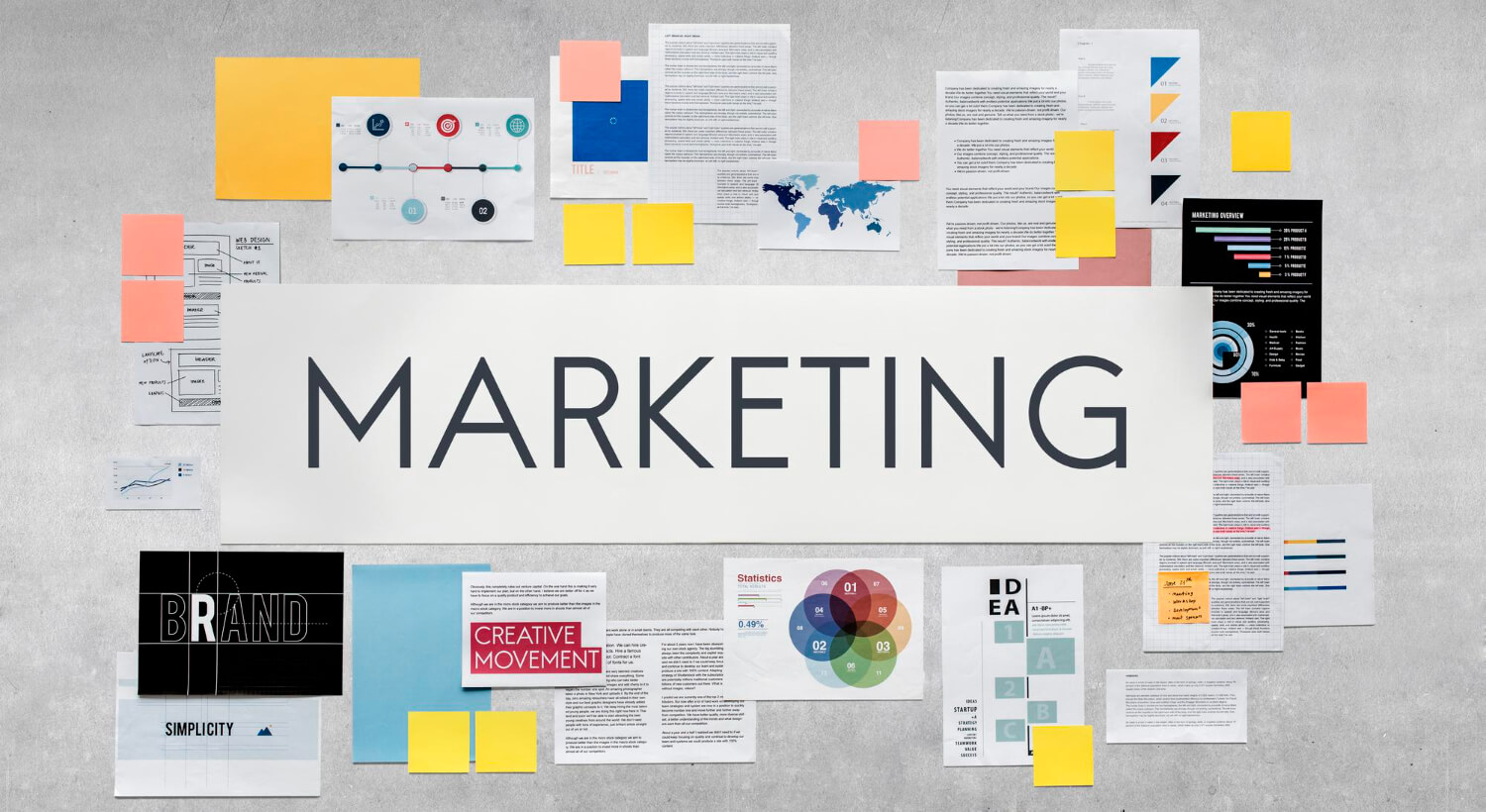All About Business Proposals: Guidelines and Extensive Resources
© Copyright Carter McNamara, MBA, PhD, Authenticity Consulting, LLC.
Sections of This Topic Include
Preparation
What is a Business Proposal?
Should I Just Use a Business Proposal Template?
Guidelines About Style of Writing to Use
First Learn About Prospect’s Organization
You Can Learn a Lot Just From Their Documentation
Meet With the Prospect Before Submitting Proposal?
Write Your Business Proposal
Draft Each Section of Your Proposal
Review Your Drafted Proposal
Submit Your Proposal
Submit Your Proposal
Follow Up to Your Proposal
Samples and Templates
Business Proposal Samples
Business Proposal Templates
Also consider
Related Library Topics
PREPARATION
What is a Business Proposal?
Definition of a Business Proposal
A business proposal is a documented, formal offer to provide a product and/or
service to a potential buyer (a prospect). The proposal can be in response to
a formal Request
for Proposal (RFP) which is a solicitation issued by the prospect that is
seeking bids from providers. The business proposal documents the provider’s
bid.
It typically includes brief description of the prospect’s problem, why you
can solve it better than anyone else, your general approach to solving it and
the approximate cost to solve it. It also includes brief description of your
organization and the people who will be working on the problem.
To get more of an impression of what a business proposal is, it would help
to look at some samples of business proposal samples.
However, do not start selecting a preferred sample to use now until you have
reviewed the guidelines in the rest of this Library topic.
Business Proposals and Business Plans Are Not the Same
In contrast to a business proposal, a business plan “is a formal written
document containing business goals, the methods on how these goals can be attained,
and the time frame within which these goals need to be achieved. It also describes
the nature of the business, background information on the organization, the
organization’s financial projections, and the strategies it intends to implement
to achieve the stated targets. In its entirety, this document serves as a road
map that provides direction to the business.” (Wikipedia).
Also see
All About Business Planning
Other Names for Business Proposals
There are various different terms used to refer to a business proposal, depending
on any conventions used by those requesting and/or offering the proposal. For
example, a business proposal is sometimes referred to as a “bid”,
which, in this context, is an offer of a product or service for a price. When
proposals are written by sales personnel, they often refer to them as sales
proposals. Another phrase used for a business proposal is a contract proposal.
If a proposal is in response to an RFP, then notice the terms used in the RFP.
Should I Just Use a Business Proposal Template?
The more your proposal is customized to the prospect’s needs, and to the culture
and style of their organization, the more likely that your proposal will win
a project with them. Standardized templates are not as likely to match the unique
features of your prospect as would your own customized proposal.
Also, if your prospect regularly issues RFP’s, then it is likely they have
already seen many of the standardized templates, including the one that you
had used for your own proposal. They might expect something more original and
customized from you.
However, if you still are committed to using a template, then you still will
benefit a great deal from reading the rest of the guidelines in the Library’s
topic. If you prefer to review some samples of business proposals now, then
this article provides several, as well as critiques each.
10 Best
Proposal Examples [With Critical Critiques]
Here is a link to numerous other samples, as well.
Business Proposal Samples
Guidelines About Style of Writing to Use
General Guidelines
Unless your prospect requires you to complete an online form when writing and
submitting your proposal,, you can tailor your proposal as much as you would
like. Consider these guidelines:
- Your proposal will appear more credible if it is written on your organization’s
stationery, including its logo and coloring.
- Standard business writing often uses Times Roman font, 12-point sizing and
1-inch margins. In addition, consider the guidelines in Business
Writing Tips for Professionals.
- Number all of the pages and mark them as “confidential”.
- If you received an RFP, then write in the same style and format as the RFP.
If you had met with the prospect before writing the proposal, then write in
the style of the conversation that you had.
- Avoid the use of jargon — words or acronyms specific to your industry,
product or service. Otherwise, define them before you use them.
- Avoid the use of humor. While it can invite a relaxed and casual atmosphere
in communications, there are too many risks that it would be misunderstood
or offensive.
- In the case of an RFP, express your gratitude for the prospect’s providing
the RFP to you.
- Despite the importance of your proposal, you should still format it so that
it can be skimmed. Use short paragraphs with titles. Do not repeat sentences
or other information. Use graphics and tables to quickly depict numerical
information.
- If you submit your proposal online, be sure your prospect could read it
on a small tablet or smart phone, that is, that your proposal can be shrunk
to that size.
- Unless you’re convinced that the prospect will not have many proposals to
review, you should limit your proposal to the number of pages that the prospect
could grasp in 5-6 minutes.
- Write confidently, but avoid exaggerations. Too much of that will hurt your
credibility.
Polish Your Writing Skills?
As far as your prospect is concerned, the quality of your writing shows the
quality of your products and services. So, if you do not have complete confidence
in your writing skills, then you would benefit from reviewing guidelines in
the following topics. After you have drafted your proposal, you should have
it reviewed by at least one person will strong skills in proof reading documents.
Vocabulary
| Spelling
| Grammar
| Writing
for Readability | Reviewing
Your Writing
FIRST LEARN ABOUT PROSPECT’S ORGANIZATION
You Can Learn a Lot Just From Their Documentation
You can learn a great deal about your prospect’s organization, even without
having met the prospect in person. That learning can help you to match your
proposal and other communications to the culture and style of their organization.
That, in turn, can make your proposal even more persuasive and credible to your
prospect.
For example, look at the prospect’s website, annual report, sales literature
and the Request for Proposal. Some things to look for are:
- Completeness – Have they produced the typical documents
that you would expect for their particular stage in organizational development?
If so, then they probably value completeness and accuracy.
- Currency – How up-to-date is the documentation? If
it’s up-to-date, then they probably value timeliness.
- Scope – Does the documentation include the typical
contents of that particular type of document? If so, then they probably have
good knowledge of standard management documents — and so should you.
- Depth – How in-depth is the content of the document?
If it is in-depth, then they probably value thoroughness.
- Alignment – For example, does the content between
the documents seem consistent and complementary? If so, then they probably
are fairly clear in their thinking and management.
- Authorship – Who has developed the various documents?
If it is appropriate authors, for example, the CEO is not doing the Board’s
documents, then they probably value having clear roles.
So what have you learned about:
- How their culture values completeness, timeliness, understanding and accuracy,
thoroughness, clear thinking and management?
- How might you customize your proposal and other communications to match
their culture and style?
Meet With Your Prospect Before Submitting Proposal?
If your prospect regularly issues RFPs, then it is not likely that they are
willing to meet with the bidder’s to their RFPs. Instead, they opt to write
very specific RFPs and rely on those to help them to reliably select the best
providers.
Otherwise, it can be extremely useful to first meet with your prospect. The
sections below suggest what questions to ask in the meeting. In that meeting,
don’t forget to use strong people skills including the following:
Interviewing
| Listening
| Non-Verbal
Communications | Questioning
| Building
Trust
Learn More About the Prospect’s Problem
In the meeting, useful questions to ask include:
- Why do they want to address the situation now?
- What did they see or hear that brought them to that conclusion?
- What will happen if nothing is done?
- What has been the effect of the problem on the rest of the organization?
- What have they done so far about the situation?
- What happened as a result of their efforts so far?
- How did they conclude that they needed a consultant now?
- Respectfully and tactfully ask, what might be their role in causing the
problem?
- What do they consider to be success
now? What would the situation look and feel like after the problem has been
solved?
- What is the budget for doing the project?
- What is the timing, especially any deadlines for completion?
Learn More About the Prospect’s Organization
For example, ask:
- How do you like to make decisions and solve problems?
- What is unique about the culture of your organization?
- How can a consultant best work in that culture?
- How do you prefer to communicate? In-person? In writing?
- What is your approach to situations, for example, do you refer to “problems”
or “opportunities”?
- Do you talk most about the “business” side of the organization
or the “people” side?
- What do you know about change management? How would you like to learn?
- What is the personality of your meetings?
For more guidelines for this meeting with your prospect, see
How
to Do the First Meeting With Your Client
WRITE YOUR BUSINESS PROPOSAL
Draft Each Section of Your Proposal
There is no standard format for a business proposal. If the prospect issued
an RFP, then notice if it suggests a certain format that you are to follow.
The following sections are typical across the different types of formats. When
writing each section, don’t forget the above Guidelines About
Style of Writing to Use.
Cover Letter
This should be a one-page letter with your company letterhead (logo and coloring).
It is not part of the proposal itself, but accompanies it. Be sure that the
cover letter:
- Is addressed directly to the contact information that you were told to submit
the proposal to. An RFP would specify that contact information.
- Thanks them for the opportunity to submit a proposal.
- Asserts your confidence that your organization can very effectively meet
their needs in a timely manner.
- Avoids duplicating information that is already in the proposal.
- References the attached proposal by the exact title and date.
- Includes your direct contact information.
- Includes your original signature (not a copy).
Be reluctant to set a deadline for them to get back to you because that raises
the risk that it won’t match their timelines.
Cover Page
The phrases “cover page” and “title page” (below) are sometimes
used interchangeably because their contents are so similar. Because of duplication
with contents of the title page, it may not be necessary to include a cover
page in your proposal unless an RFP specifies to include it.
Some proposal writers prefer to have a cover sheet that encapsulates the proposal.
It includes the title of the proposal and perhaps the organization’s logo and
color scheme. If a cover sheet is included, then there also is a back cover
at the end of the proposal, and it duplicates info from the cover sheet.
Example
of Cover Sheets
Title Page
As mentioned above, the phrases “cover page” and “title page”
are sometimes used interchangeably because their contents are so similar. The
title page typically includes:
- Title of the proposal
- Date of the completed proposal
- Title of the author
- Brief description of the purpose of the proposal (4-5 sentences)
- Direct contact information of the key contact in the prospect’s organization
- Direct contact information of the person in your organization who is knowledgeable
about the proposal
Examples of Cover Pages
Table of Contents
A table of contents is very useful if your proposal will be more than four
pages long. Along with associating page numbers with topics, the listing of
the topics themselves can be used to quickly convey the nature and organization
of the content in the proposal.
It is very handy if the titles can be active Web links, so the reader can conveniently
click on a title and immediately be transferred to that section in the proposal.
Executive Summary
Because the Executive Summary is a summary of the highlights of the proposal,
it is usually best to write the Summary after having written the other sections
in the proposal. Highlights to be sure to include are clear, concise and persuasive
descriptions of:
- Your excitement and confidence in submitting your proposal
- The prospect’s problem, including its adverse impacts on their organization
- Your proposed solution, and how it particularly suits the nature and needs
of your prospect’s organization
- Listing of the key benefits of your solution in their organization, including
reference to relevant research and results regarding your solution
- Your proposed methodology toward the solution, and how it is relevant, realistic
and flexible to their needs
- Your unique value proposition — how your company is the
prospect’s best choice among your competitors
How to Write an
Executive Summary for Your Proposal
How
to Write a Business Proposal Executive Summary
How
to Write an Executive Summary for Your Proposal
Introduction
Some RFPs specify an introduction that briefly describes your organization,
including its mission, strategic priorities, history, successes and why it is
an excellent choice for your prospect’s situation.
This section might not be needed if you plan to include more information, for
example, about your products and services and any personnel who will be involved
in the work with the prospect. In that case, you might instead include a section
later on, such as “Company Overview” (later on below).
Statement of the Problem
Here is where you show that you completely understand the current need that
your prospect has, whether they refer to it as a “problem”, “priority”
or “goal”.
In this section, focus on what you can provide. The next section explains
how you can provide it. Don’t forget to consider any learning that
you got from previously reviewing the prospect’s documentation, as well as if
you had met with the prospect in person, as explained above. In this section,
include brief descriptions of at least the following:
- The prospect’s need in terms of the problem or the significant goal to be
addressed
- What the adverse effects will likely be if the prospect’s problem is not
solved
- How your product or service will meet that need
- What overall success will look like after the need was met
- Individual outcomes, or benefits, to the organization that together will
comprise that success
In the case of an RFP, your descriptions should closely match — but without
exactly copying — the wording that your prospect wrote in the RFP. Your tone
should convey a sense of urgency to meet the need, and yet strong confidence
in what you can provide.
It can be very powerful to include a testimonial or two now from a previous
client in whose organization you were successful in solving a problem similar
to the prospect’s.
How
to Write a Problem Statement for Business
How to Write
a Problem Statement
Methodology (Outcomes, Deliverables and Timelines)
List Outcomes and Methodologies to Achieve Each
Here is where you specify how you will achieve the what that
you had specified in the above information about the problem. The “how”
is best explained in terms of action plans that are associated with each outcome
that you itemized in the above Statement of the Problem. For each outcome, specify:
- Tangible deliverables, for example, documented assessment plans, status
reports, presentations and post-assessment reports.
- Who will produce and provide each deliverable.
- To whom it will be provided and by when (timetables).
The following article can be very useful when developing and associating action
plans with individual outcomes or goals:
Guidelines
and Resources for Action Planning Phase of Consulting
Organize Methods Into Various Project Phases?
This information is most concisely and clearly depicted in the form of a table.
For complex or long projects, it might be most understandable if you organize
the outcomes and associated methodologies into various phases, for example:
- Phase 1 – Diagnostic and Pre-Assessment
- Phase 2 – Implementation
- Phase 3 – Post-Assessment and Follow-Up
Be Careful About Finalizing Methodologies
It might be that, if your prospect hires you, then further exploration (or
discovery) into the problem
might reveal that what the prospect thought was the problem was actually just
its symptoms.
Thus, there might be a different problem and methodology required than what
was originally described in your proposal. So be sure to specify that your proposed
methodology is in accordance with the current problem reported by the prospect.
Pricing and Payment Terms
Use Detailed or Overall Pricing?
There are different viewpoints about how to derive the pricing in business
proposals. Some experts advise not including detailed pricing, for example,
per-hour pricing. They suggest that your pricing should be based on the overall
value of the outcomes that your products and services will achieve for the prospect.
Others advise that detailed, for example, per-hour pricing, is the most understandable
and, thus, the most credible way to present that information to prospects.
If you have an RFP, be sure to reference how the prospect wants the pricing
information to be described. These articles provide very useful guidelines to
selecting which approach to use.
Consulting Fees and
Rates: How Much Should I Charge?
How to Determine
Consulting Fees
Guide to
Value-Based Pricing for Consultants: 10 Experts Share Their Fee Strategies
Payment Terms
In this section, specify your proposed payment schedule, including:
- When you will invoice the client
- Which prices are to be paid and when, including any initial and final payment
amounts
- How prices are to be paid, for example, in US dollars
- Interest and penalties for late payments
Mention any additional payment options, for example, early payments or lump-sum
payments. Mention that your proposed schedule can be adjusted to suit any standard
payment terms used by your prospect.
Terms and Conditions
The decision now is to decide what should be included here in the business
proposal compared to what should be specified later on in a contract if your
prospect selects your proposal. Be sure to reference an RFP if available to
discern what should be included in your proposal. It might require that you
specify terms regarding:
- Proposed roles and responsibilities of the prospect’s and your organizations
- Terms of confidentiality
- Ownership of intellectual property
- Licensing and bonding
Different experts would assert that certain information should always be included
in a business proposal and others would assert that the contract is the most
appropriate place to specify terms other than payment terms.
Core Elements to
Include in a Consulting Contract
How
to Do Consulting Proposals and Contracts
Protect
Your Business with Proposal Terms & Conditions
Company Overview
Here is where you impress the prospect with the appropriateness and credibility
of your company’s expertise and resources. Include:
- Mission of your organization
- Legal structure
- Key personnel and resumes
- Professional code of ethics
- Key awards, presentations and publications
- Testimonials relevant to the prospect’s problem
- Case studies that more fully depict similar projects, including their problem,
methods and solutions
Signature Pages
Here is where you include the original signature of those who composed the
proposal. Be sure to sign in blue ink, which more readily indicates that the
signatures were not merely copies of original signatures.
Similar to the Terms and Conditions section, if your proposal is including
terms and conditions that typically would be in a contract, then specify the:
- Positions
- Dates
- Agreement that is assumed by the signature, for example “By signing
this document, you agree to the terms and conditions specified herein”
Appendices
In this section, include information and materials that further explain the
information in the body of the proposal, for example:
- Resumes
- Graphics and charts
- Testimonials
In order to accommodate the likely tight schedules of prospects who will be
reviewing numerous proposals, title the Appendices as “Supplemental Information
and Materials” to indicate that it is optional for the prospect to read.
Review Your Drafted Proposal
Have someone else review your proposal, ideally someone who is somewhat familiar
with your product or service. Have them follow this checklist:
- If you are following an RFP, does your proposal exactly match the requirements
specified in the RFP?
- Are there any spelling and grammatical mistakes? Avoid common
mistakes in vocabulary and grammar, for example, use of “affect”
for “effect”.
- Check apostrophes and quotation marks to be sure they are used correctly.
- Do your numbers total correctly, for example, in your pricing?
- Do the deliverables seem reasonable? Are the timelines reasonable with each
deliverable?
- Read the document aloud to someone, and ask them to interrupt where the
document does not make sense or seems repetitive.
- Focus especially on condensing the wording. Avoid
These Filler Words in Your Writing.
SUBMIT YOUR BUSINESS PROPOSAL
Submit Your Proposal
Electronic Submission
If your prospect prefers that you submit your proposal electronically, then
attempt to include a read receipt, that is, verification that the proposal was
indeed received by the prospect. Also, print out any response from the electronic
system that indicates that your proposal was received.
If you are concerned about the electronic submission changing any of your formatting
or preferred writing style, then you might also email your proposal. However,
if the prospect is likely to receive many proposals, then they are very likely
to screen out any proposals that do not closely match the requirements specified
in the RFP.
Make Changes to Your Submitted Proposal?
If you prefer to make any changes to a proposal that was already submitted,
then be sure to change the date of the proposal, especially on the title page.
Be sure to notice if an RFP specifies any deadlines for changes to submitted
proposals.
Similarly, if your prospect suggests changes to the proposal, then be sure
to change the date of the proposal. If you expect several changes, then it might
be useful to include a Revision Page in the proposal that specifies the dates
and nature of each change.
Follow Up to Your Proposal
Contact Prospect About Your Submitted Proposal?
If an RFP specifies dates in which the proposals would be reviewed and a candidate
selected, then be reluctant to contact the prospect beforehand. If you do, then
do it only once, so as to not irritate those processing the proposals, especially
if the prospect is likely to be reviewing numerous proposals.
Preparation for Interviews by Your Prospect
If your prospect selects you for a follow-up interview, then you should carefully
prepare. Guidelines to consider for the interview include:
- Study the RFP one more time to be sure you understand the prospect’s problem.
- Review your proposal one more time to be sure you can concisely answer any
questions they might pose about its contents.
- If you had not met with the client before, then during the interview, consider
posing the questions listed above in the section Meet With
the Prospect? It can be very impressive to the prospect that you had thought
of such useful questions.
These articles in the Library will also be useful:
How to
Interview for a Job
P
is for Poise and Persuasion
Tips
On Presenting A Proposal
SAMPLES AND TEMPLATES
Business Proposal Samples
PandaDoc
Sample
Business Proposal
Venngage
Business
Proposal Sample
Free
Business Proposal Samples
Business Proposal Templates
Proposal Templates
Free Business
Template
Business Proposal Form
Free
Business Proposal Template
Free Proposal Templates
Learn More in the Library’s Blogs Related to Marketing
In addition to the articles on this current page, also see the following blogs
that have posts related to Marketing. Scan down the blog’s page to see various
posts. Also see the section “Recent Blog Posts” in the sidebar of
the blog or click on “next” near the bottom of a post in the blog.
The blog also links to numerous free related resources.
Library’s
Marketing Blog
Library’s
Public and Media Relations Blog
For the Category of Marketing:
To round out your knowledge of this Library topic, you may
want to review some related topics, available from the link below.
Each of the related topics includes free, online resources.
Also, scan the Recommended Books listed below. They have been
selected for their relevance and highly practical nature.
Related Library Topics
Recommended Books











